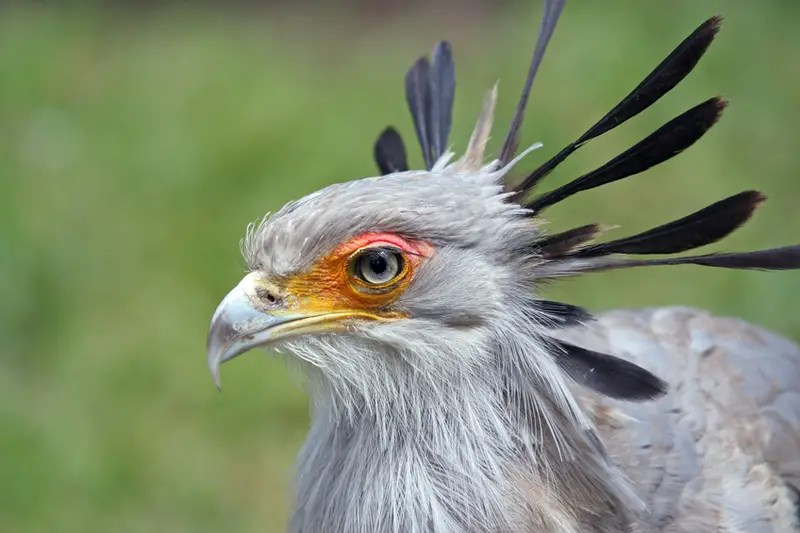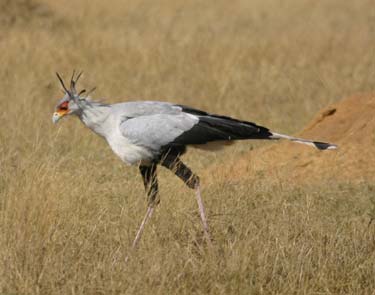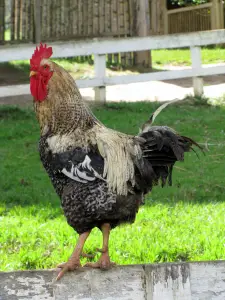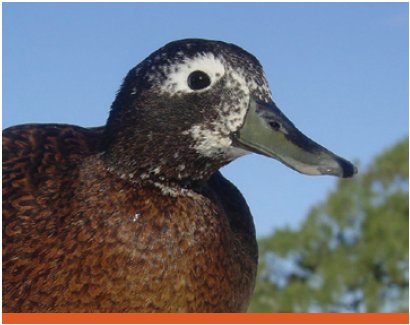Secretary Bird
Secretary bird has obtained its unusual name thanks to the black feathers on the crest that remind of goose feathers, which secretaries used to wear inserted in their wigs. In appearance, this bird looks similar to a crane, and is actually quite a unique predatory bird.
They reach 120 – 150 cm in length and 3,4 – 4,4 in weight, putting them among the average sized birds of prey, that are smaller than, for instance, hawks, but larger than falcons. Most of the Secretary Bird’s body is grayish, while the tips of their wings, as well as the tail and upper parts of the legs are completely black. Their appearance is made unusual by the long, crane-like legs and a set of black feathers that rise during the mating period, on top of their heads.
Secretary Birds live in pairs, with their natural habitat being the African savannas, south of the Sahara Desert. They are wandering birds, because staying in one area wouldn’t provide the bird with the necessary food. Mature birds spend most of the year in pairs, cooperating in hunting and also sleeping together, high in the trees. Secretary Bird spends most of its time on the ground, searching for food. It sometimes also flies to a great height and then nosedives at lightning speed, to surprise the possible prey.
They catch their prey by patrolling through the bushes and small growths. Everyone once in a while the Secretary bird hits the ground with its muscular legs to scare small mammals and rodents out of their covers. The prey is mostly chased on ground and the Secretary Bird will rarely fly after it. Although these birds are known as snake catchers, most of their diet consists of rodents, small mammals and other birds. In some parts of Southern America, Secretary Birds are tamed by farmers to catch snakes and mice.
These birds find a partner and form life-long pairs. That is why, rut is a very important part of their lives, as each male tries to attract the best possible female. The male flies around the chosen female and emits loud, moaning sounds, and later the birds start a ritual dance. After a pair has been established, they both construct a nest in a bush or a tree. Two to four eggs are laid and they hatch after about seven weeks. Bot the parents bring them digested food, and later start to train them to tear prey by bringing whole creatures to the nest. After 80-100 days, the young birds leave their parents’ nest and start independent lives. If there are no obstacles, Secretary Birds use the same nest for multiple years, expanding it every year, until it reaches a size of 2 metres in diameter.
Secretary birds are not directly endangered. This species was never widespread, but lately the population is on a decline due to destruction of their natural habitat. Still, the popularity among farmers will prevent extinction of this spectacular bird.





I interested see this bird.